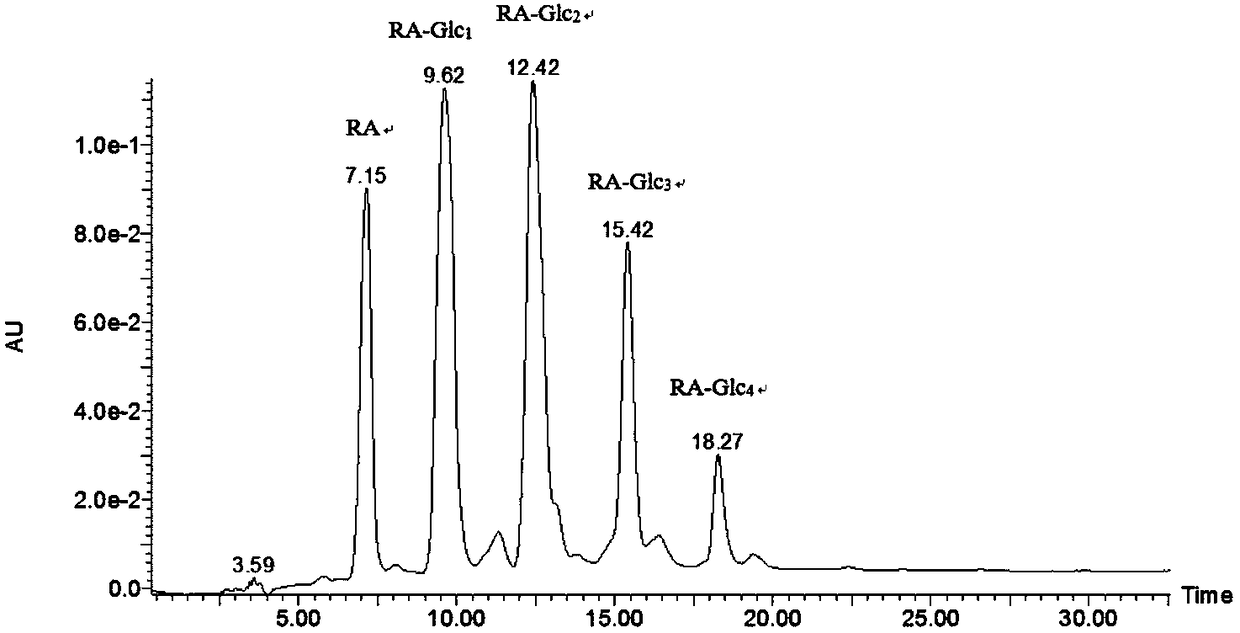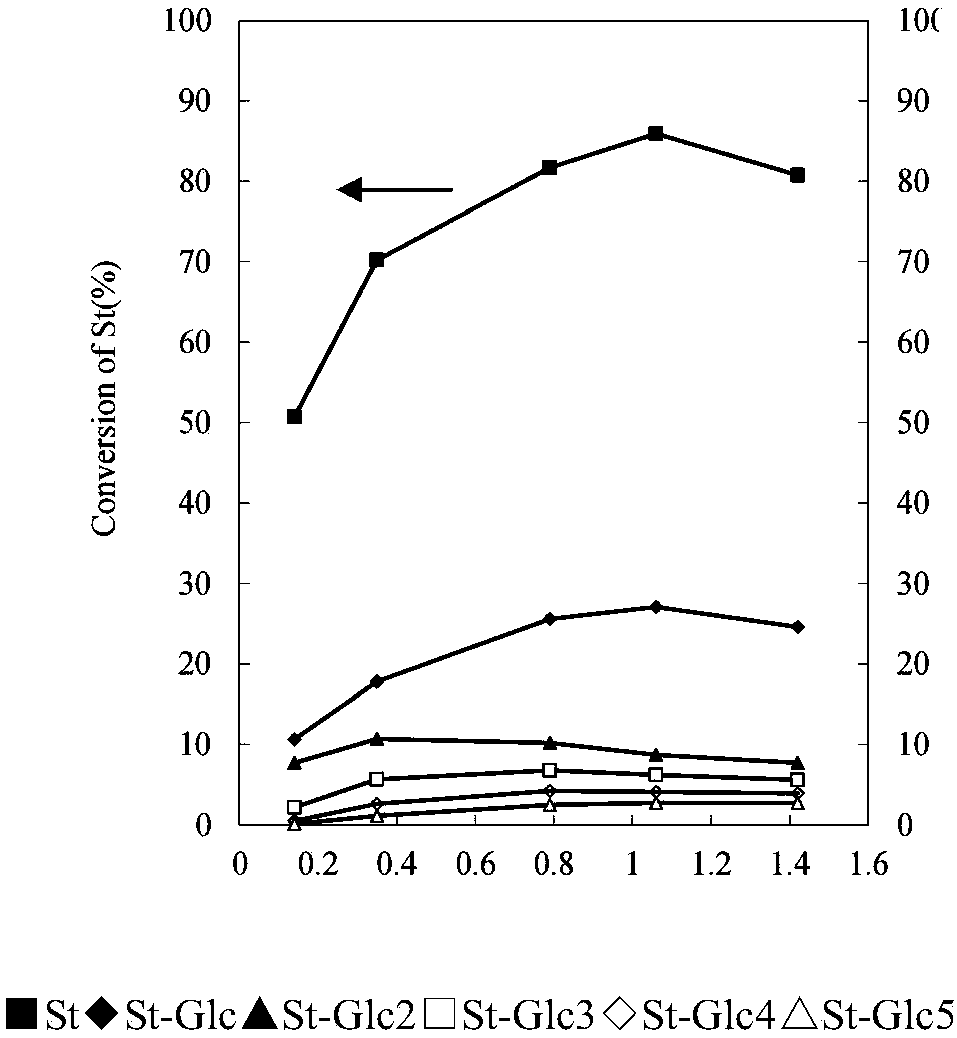Method for preparing glucose-based stevioside by enzymatic variable temperature and high-flux
A technology based on stevioside and steviol glycoside, which is applied in the field of sweetener biosynthesis, can solve problems such as irregularities to follow, different effective stabilizers, and no universal significance, so as to improve sweetness quality, sweetness and Great taste, guaranteed high efficiency and utilization
- Summary
- Abstract
- Description
- Claims
- Application Information
AI Technical Summary
Problems solved by technology
Method used
Image
Examples
Embodiment 1
[0035] The preparation of embodiment 1 cyclodextrin glucosyltransferase (cyclodextrin glucosyltransferase)
[0036] Geobacillus sp. strain (Geobacillus thermoglucosidasius, ATCC 43742) was used as the production strain, and batch fermentation was carried out after inoculation with 8% inoculation amount. The composition of the medium is: glucose 0.8%, lactose 0.05%, peptone 1.2%, yeast extract 2.4%, K 2 HPO 4 0.3%, KH 2 PO 4 0.98%, CaCl 2 0.28%. When the dissolved oxygen rises to 85%, start to feed the feeding solution, control the temperature at 33-37°C during the growth stage of the bacteria, and maintain the dissolved oxygen at 25%-30%; when the bacteria OD 600 When reaching 25, add 1% (mass volume fraction) glycine; When thalline OD 600 When it reaches 50°C, lower the temperature to 23-27°C and add 0.2-0.4g·l continuously -1 h -1 At the same time, the feeding solution was added in a gradient-decreasing manner; after 30 hours of fermentation and cultivation, the ferm...
Embodiment 2
[0037] Example 2 Preparation of glucosyl steviol glycosides using tapioca dextrin and rebaudioside A as raw materials
[0038] Add 100 kg of water into the jacketed reactor, heat to 85° C., and then add 15 kg of tapioca dextrin and 15 kg of rebaudioside A (HPLC content 98%) successively, and stir to dissolve. After fully dissolving, it was rapidly cooled to 65°C, and 5 mL of 1% calcium chloride and barium chloride (mass ratio 0.2:1) aqueous solution, 4 g of glycerin and 250 kU of the ring obtained in Example 1 were added to the jacketed reactor with stirring. A solution of dextrin glucosyltransferase. React at 65°C for 3h, then raise the temperature to 75°C for 24h, then raise the temperature to 80°C for 10h, and end the reaction. The product can be directly spray-dried to obtain glucosyl steviol glycoside with a moisture content of 2.1%. This product can be directly used in products that do not require a total glucoside content of not less than 95% without decolorization. T...
Embodiment 3
[0045] Example 3 Preparation of glucosyl steviol glycosides using β-cyclodextrin and rebaudioside A as raw materials
[0046] Add 100 kg of water into the jacketed reactor, heat it to 82° C., and then add 10 kg of β-cyclodextrin and 25 kg of rebaudioside A (HPLC content 97%) successively, and stir to dissolve. After fully dissolving, rapidly cool to 60°C, add 10mL of 1% calcium chloride and barium chloride (mass ratio 0.5:1) aqueous solution, 2g glycerin, 2g sorbitol and 1000kU to the above-mentioned jacketed reactor under stirring. 1 solution of the resulting cyclodextrin glucosyltransferase. React at 60°C for 3h, then raise the temperature to 74°C for 15h, then raise the temperature to 80°C for 8h, and end the reaction. The product is spray-dried to obtain glucosyl steviol glycosides with a moisture content of 2.0%, which can be directly used in products that do not require a total glucoside content of not less than 95% without decolorization. The content of rebaudioside A...
PUM
 Login to View More
Login to View More Abstract
Description
Claims
Application Information
 Login to View More
Login to View More - R&D
- Intellectual Property
- Life Sciences
- Materials
- Tech Scout
- Unparalleled Data Quality
- Higher Quality Content
- 60% Fewer Hallucinations
Browse by: Latest US Patents, China's latest patents, Technical Efficacy Thesaurus, Application Domain, Technology Topic, Popular Technical Reports.
© 2025 PatSnap. All rights reserved.Legal|Privacy policy|Modern Slavery Act Transparency Statement|Sitemap|About US| Contact US: help@patsnap.com



